Armored vehicles of Germany in the Second World War. SAU Sturmtiger. "Tiger" against bunkers
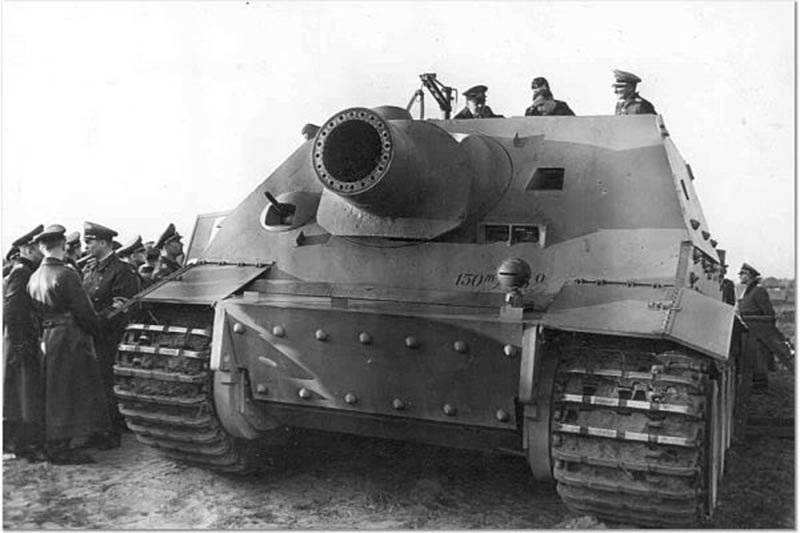
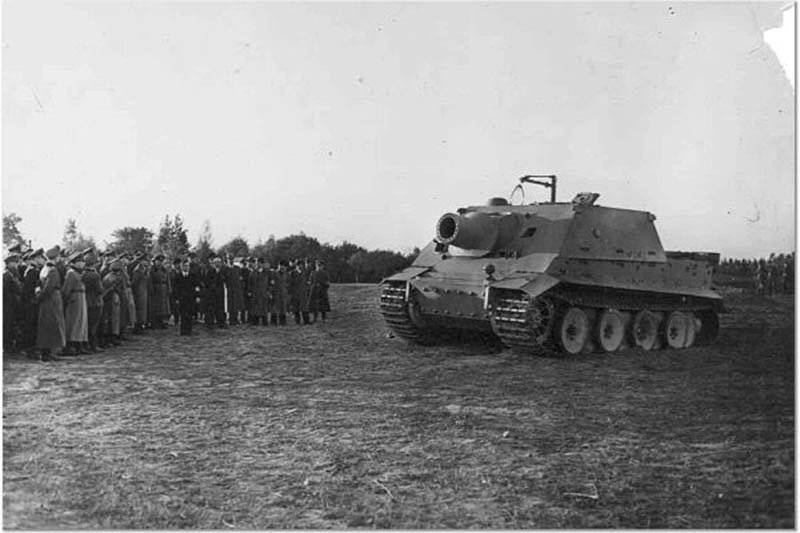
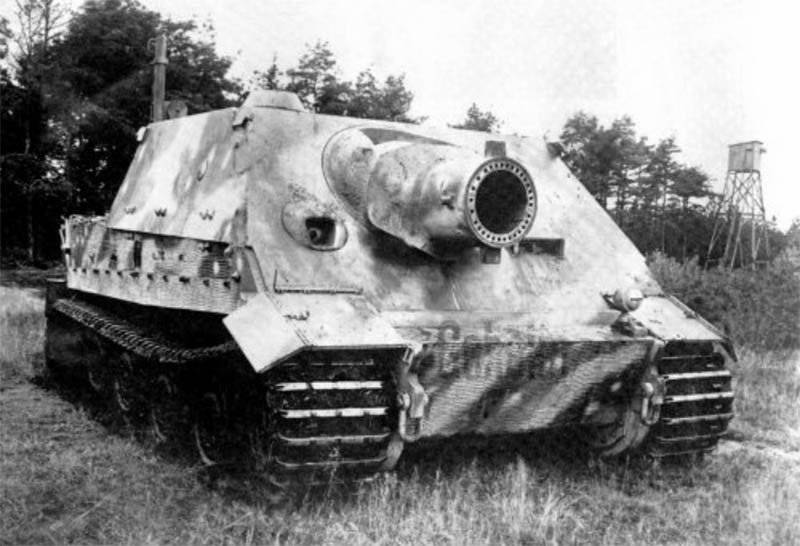
The proposal was approved at the highest level, after which the study of the appearance of the new armored vehicle began. First, the self-propelled gun, code-named Sturmtiger ("Sturmtigr"), was supposed to look like a heavy tank PzKpfw VI with a wheelhouse mounted on it and a 210-mm howitzer. The preliminary design of this self-propelled gun at Henschel took a long and hard time - as they say, the subcontractors let us down. Howitzer development took longer than originally planned. Therefore, in the middle of the spring of the 43rd, they remembered about an interesting project, rejected fleet. The Raketenwerfer 61 bomb, also known as the Gerat 562, had a caliber of 380 millimeters and promised a promising self-propelled gun a great future. After adopting the Sturmtigr self-propelled guns, the bomber received the StuM RM 61 L / 5 index.
The barrel of the Rheinmetall Borsig Raketenwerfer 61 bomb was only 5,4 in caliber, which was compensated for by the large weight and projectile power. In addition, it was assumed that the fire will be conducted along the hinged trajectories, for which a large barrel length is not required. The bombs of the bombardment consisted of a casing, a rack and pinion mechanism and a lock plate with a thickness of 65 millimeters. The loading of the gun had one original feature: after the projectile was milled into the barrel and the latter was locked, there was a small gap in millimeters 12-15 between the plate and the back of the projectile. He was needed for the next goal. In the shells of the bomb bomb there was a solid propellant charge, as well as a sustainer solid propellant engine. Obviously, throwing a 350-kilogram ammunition will yield a tremendous force. Therefore, a gap was made between the projectile and the lock, made associated with the barrel casing channels. Between the barrel of the Gerat 562 and its casing there was a space through which the powder gases burst outward, towards the muzzle. Thanks to this system, it was not necessary to install anti-recoil devices on the Sturmtigr.
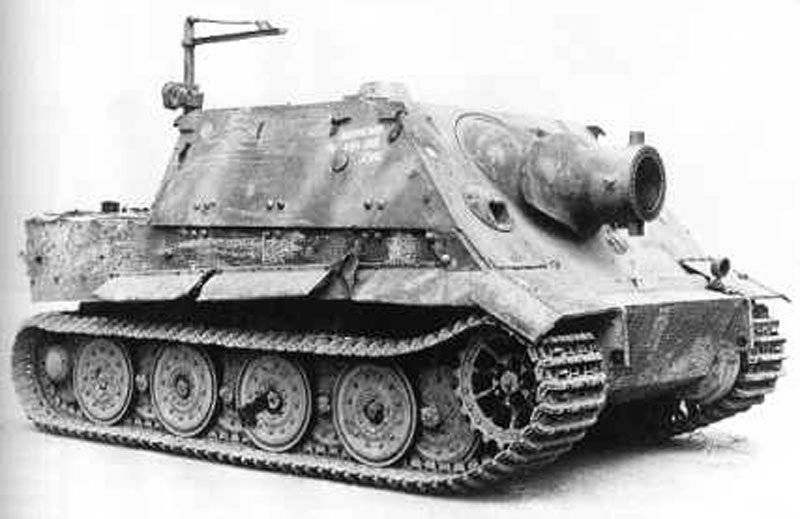
Unlike other barrel artillery systems, the Raketenwerfer 61 was designed for firing solid propellant projectiles. High-explosive ammunition weighing 351 kilogram equipped with a propellant charge and saber solid engine. In front of the shells, up to 135 kg of explosive was placed. The bottom of the ammunition was 32 inclined holes located around the circumference. Thanks to the configuration of these "nozzles", the projectile rotated in flight. Also, a slight rotation was attached to it by rifling the barrel, which included special projectile pins. The active-reactive system led to an interesting feature of shooting: the muzzle velocity of the projectile did not exceed 40 meters per second. A moment after the rocket projectile exited the engine ignition occurred. The latter accelerated the projectile to speed in 250 m / s. The 380-mm projectile charge was initiated by a detonator that could be tuned to a delay from 0,5 to 12 seconds. According to the instructions attached to the Sturmtiger ACS, at the maximum elevation of the barrel, the firing range was 4400 meters.
Because of the original gun with a special ammunition, we had to significantly revise the old views on the order of loading the gun. Active-rocket projectiles were placed in the barrel manually, through the breech. For this, there was a special tray with rollers and a small telpher with a manual drive in the fighting compartment. Before charging, it was necessary to lower the barrel to a horizontal position, after which the design of the shutter made it possible to unlock it. Then the projectile was manually sent to the barrel. In case the ammunition did not get its pins into the rifling of the barrel, the crew had a special key that could turn it to the desired angle. The “Assault Shuttle” ammunition consisted of 12-14 shells. Six pieces each were placed in holders on the side walls of the combat compartment. The thirteenth projectile was placed in the barrel, and 14-th - on the tray. Due to the large mass and dimensions of the shells, the loading of the bomb bomb took considerable time. A well-trained crew managed to make no more than one shot in ten minutes. In this case, four out of five crew members participated in the loading procedure. No less time consuming and ammunition equipment. A special crane was installed on the cabin roof, with the help of which shells were transferred from the supply vehicle to the fighting compartment. For these purposes, there was a special hatch above the tool tray. The lowered projectile was transferred to its place with the help of an internal telpher, after which the procedure was repeated.
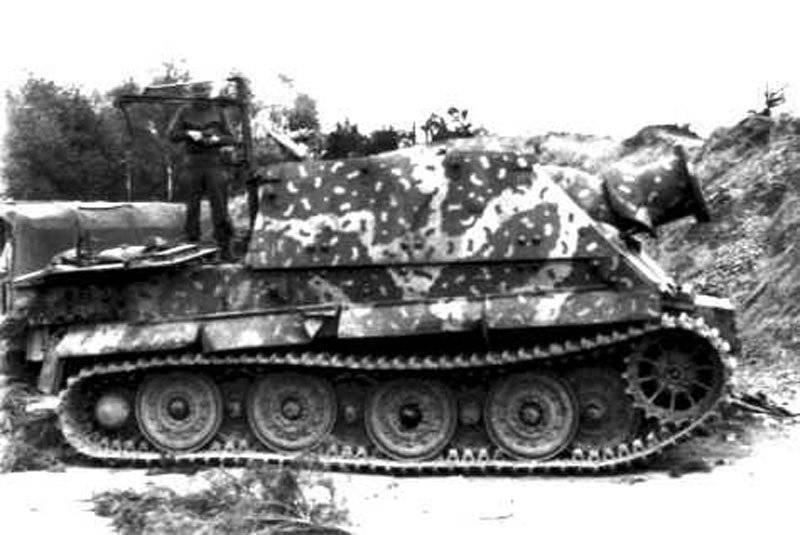
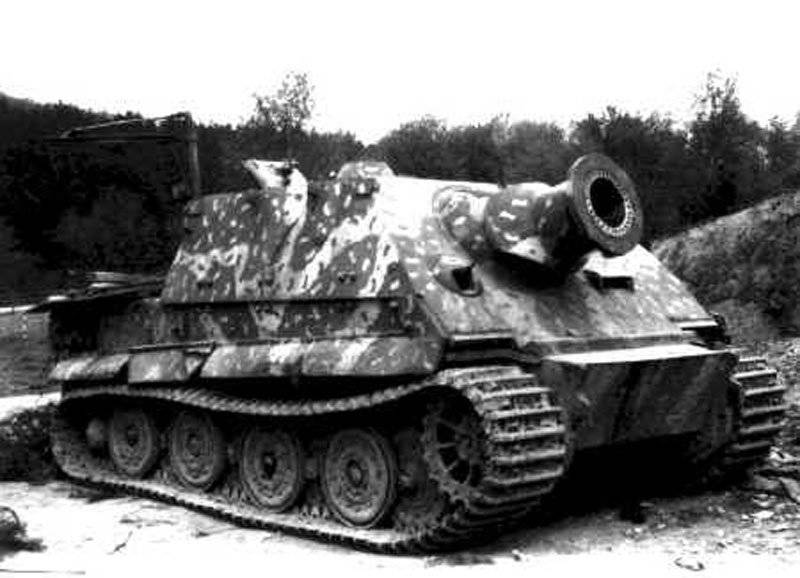
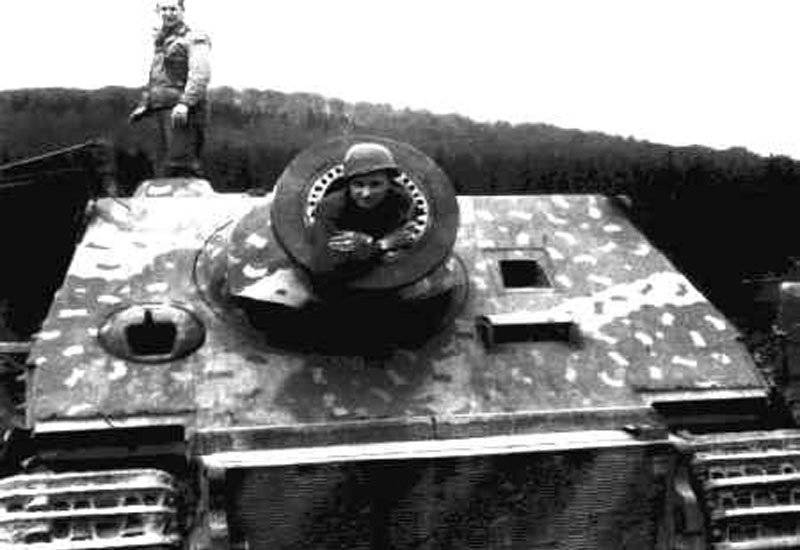
The absence of any special recoil devices allowed the Raketenwerfer 61 to be installed on a relatively simple ball mount. The guidance in the horizontal plane was carried out within ten degrees from the axis, in the vertical - from 0 ° to 85 °. The gun was built with a telescopic sight Pak ZF3x8 with a three-fold increase. Other optics "Sturmtigra" consisted of the commander's periscope on the roof and the observation sight of the driver. Additional weapons self-propelled was quite diverse. A ball mount with a MG34 or MG42 machine gun with ammunition in 600 ammunition was mounted in the front plate. Instead of a manhole cover for loading a projectile, a module with an 90-millimeter breech-loading mortar could be installed. In the extreme case, the crew had MP38 / 40 machine guns.
The undercarriage of all issued "Assault Shutters" was completely analogous to the undercarriage of ordinary "Tigers". The fact is that the self-propelled mortar bomber was not going from scratch, but was reworked from ready-made tanks. Therefore, 12-cylinder gasoline engines HL210P30 or HL230P45, as well as the transmission remained unchanged. At the same time, the tank armor was significantly redesigned. Removed part of its roof and two front plates. Instead, they put welded wheelhouse of rolled cemented armor plates. The forehead was thinner in millimeters in 150, the bead and the forage were 82. The roof of the fighting compartment was made of 40-mm panel. The remaining elements of the armored hull did not change.
The Sturmtiger self-propelled gun project was ready by the beginning of August 1943. The German leadership immediately approved it and began to make plans for mass production. For example, the initial assembly volumes were ten cars per month. However, the manufacture of "Shturmtigrov" threatened to hit the production of heavy tanks. Therefore, it was made a simple and original decision: to remake the tanks coming to overhaul. It is from this PzKpfw VI that the first prototype was assembled. Alkett made it in the fall of 43, after which the tests began. Due to a number of circumstances, the cutting of the first prototype was assembled from ordinary non-armored steel. Test shooting showed high firepower of the machine. There were no complaints: long and time-consuming loading limited the ability of self-propelled guns. Also a number of complaints caused shells that were not brought to mind. As a result, it turns out that until the very end of World War II, the crews of the “Stormmighters” will have to shoot only high-explosive shells. The promised cumulative ammunition for the destruction of very strong structures has not been made.
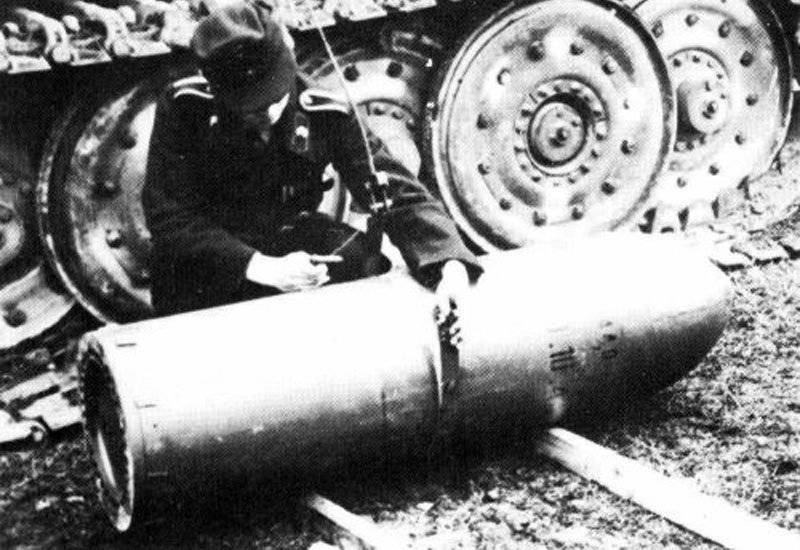
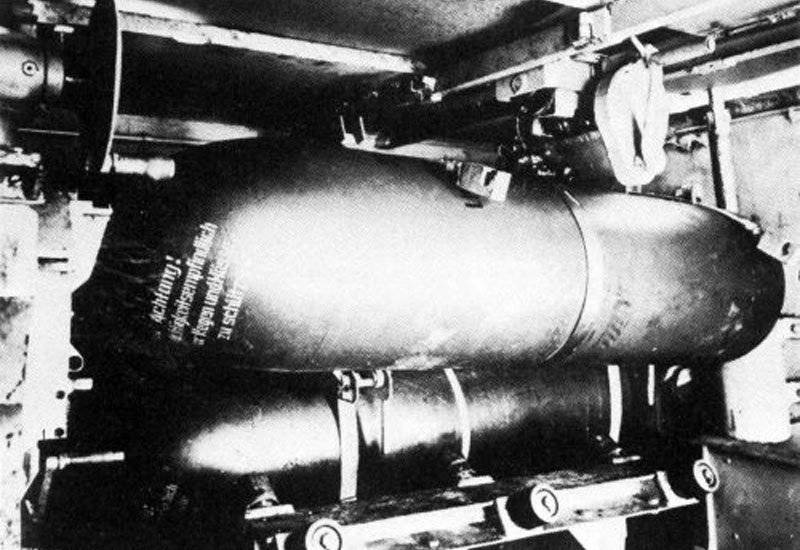
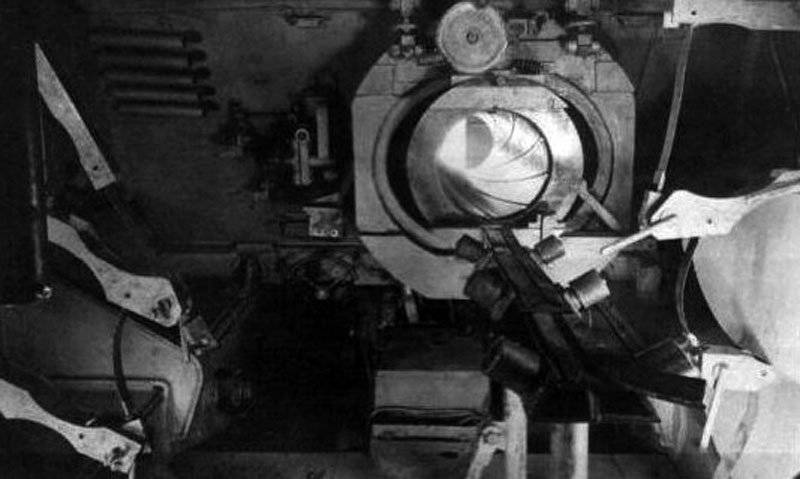
A complete prototype check was delayed for ten months. Because of this circumstance, the SturmTigr went into battle straight from the range. 12 August 1944, the prototype without a reservation and with just 12 shells was sent to Warsaw, where it was supposed to be used in suppressing the uprising. The results of firing at the objects of the rebels confirmed all the conclusions of the testers: the projectile is unreliable, and the accuracy still leaves much to be desired. In addition, a new one was added to the old problems. When firing at the test site, the undermining of training objectives was proceeding normally. However, heavy active-reactive munitions were intended, above all, for firing well-protected concrete objects. In the case of brick houses, the piercing action of the projectiles was excessive — the house literally made its way through, the projectile sunk into the ground, and the explosion was partially absorbed by the soil. Five to seven days after the arrival of the first prototype near Warsaw, it was joined by the newly assembled first production copy. The shells that arrived with him had more sensitive fuses, thanks to which the fire power of the bomb-bombs was fully restored to the range indicators.
Serial production of self-propelled guns lasted extremely long. The first of the 17 machines was assembled on 13 August 44, and the last 21 September. Serial machines practically did not differ from the prototype. The most noticeable difference is the other rifling, with 36 rifling instead of nine. In practice, this meant that, with improper feed, the projectile had to be turned to a smaller angle. Only after the end of the assembly, the Sturmtiger was adopted under the name 38 cm RW61 auf Sturmmörser Tiger. Until the end of the 1944 autumn, three companies were formed in the Wehrmacht, which were armed with the new "Assault Man". In addition to serial samples, a prototype was sent to the troops, which was brought to the state of mass-produced vehicles. He did not serve for a long time - at the end of 44, he was written off due to heavy wear.
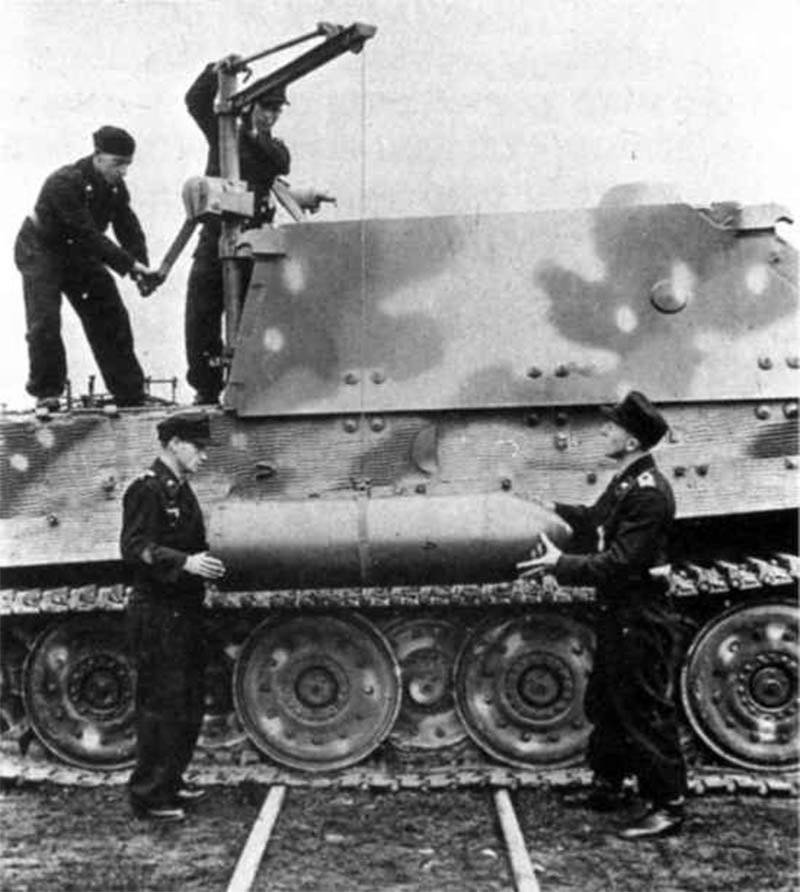
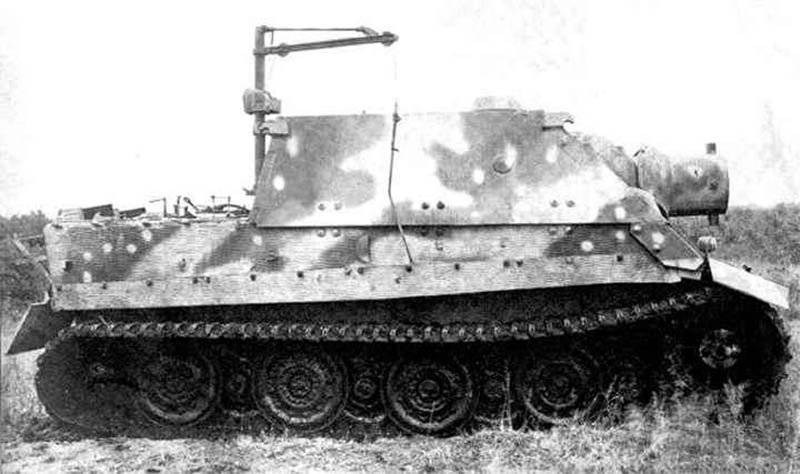
The specific tactical niche of the Sturmtiger self-propelled gun in combination with the absence of a large number of well-fortified targets and the constant retreat of the German forces led to the fact that 380-mm shells were sent to a variety of objects. For example, in the report of the 1001 of the company, which was armed with the "Sturmtygry", the destruction of three Sherman tanks at once was just one shot. However, it was more fortuitous luck than normal practice. Other notable events from the combat practice of the 1000, 1001 and 1002 companies are the only subdivisions where 38 cm RW61 auf Sturmmörser Tiger were - if they were, they did not receive wide popularity. But even during the war, self-propelled guns "became famous" to others. Because of its large combat mass, the 66 tons of "SturmTigr" often broke down, and at times there was no way to repair or evacuate them to the rear. It is worth noting that before the beginning of spring 1945, this was a rather rare practice - over the winter, the Germans wrote off just one car for malfunction. "The season of loss" began in March. In just a couple of months of spring, most of the remaining "Assaultants" were abandoned or destroyed by their own crews. The equipment was increasingly wearing out, and there was no room for repair. Therefore, the fighters were forced to retreat without their combat vehicles.
It is worth noting that not all self-propelled guns were destroyed. At least three or four units fell into the hands of the anti-Hitler coalition countries. There is information about the post-war trials of two copies in the USA and the UK. Until our time, only two “Sturmtigras” survived, which are now museum exhibits. The first is located in the tank museum of the city of Kubinka, the second is in the German Tank Museum (Münster). There is a version that the self-propelled gun from Kubinka is the same prototype, modified to complete the serial machine, although 100% proof of this has not yet been found. In addition, in European museums there are several active-rocket projectiles for the 380-mm bomb Stuom RM 61 L / 5.
The 38 cm RW61 auf Sturmmörser Tiger project turned out to be ambiguous. The excellent self-propelled firepower and remarkable booking were more than compensated for by low running data and a not very reliable transmission. Regarding the latter, the same can be said as about the power units of any late modifications of the Tigr tank. The engine and transmission did not always cope with the increased combat mass, which in some cases led to the loss of the car. At the same time, apparently, the disadvantages of the Sturmtigram were not limited only to the problems of transmission and running gear. Large-caliber barrel artillery with active-reactive ammunition was not the best type of military equipment. Low accuracy, ultra-low rate of fire for the ground forces and a very narrow tactical niche led to the fact that not one of the countries of the world began to take this direction seriously. The Shturmtigr is the first and last serial jet bomb.
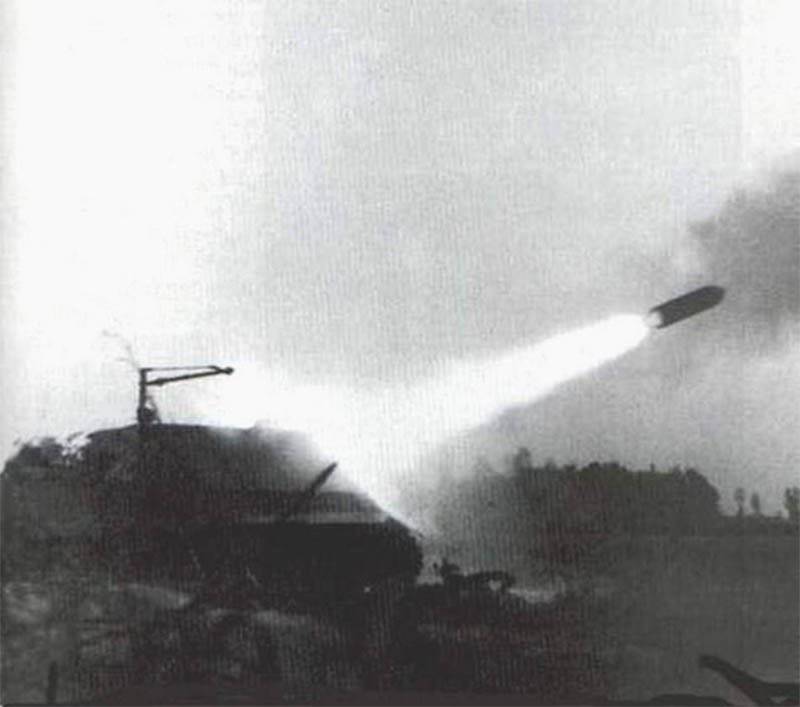
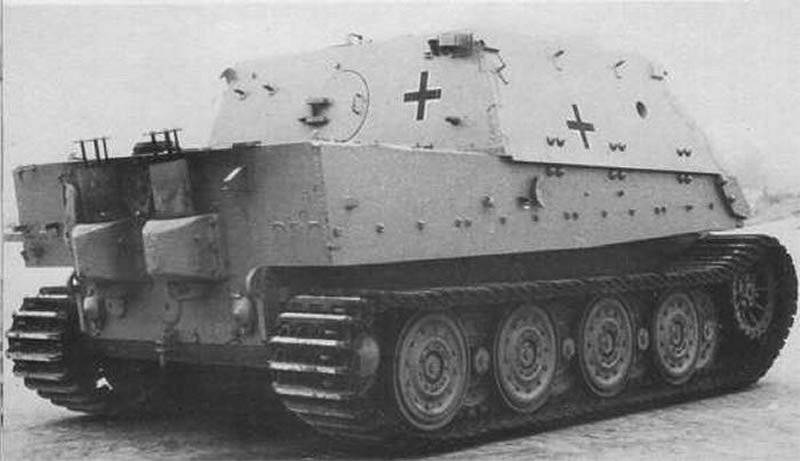
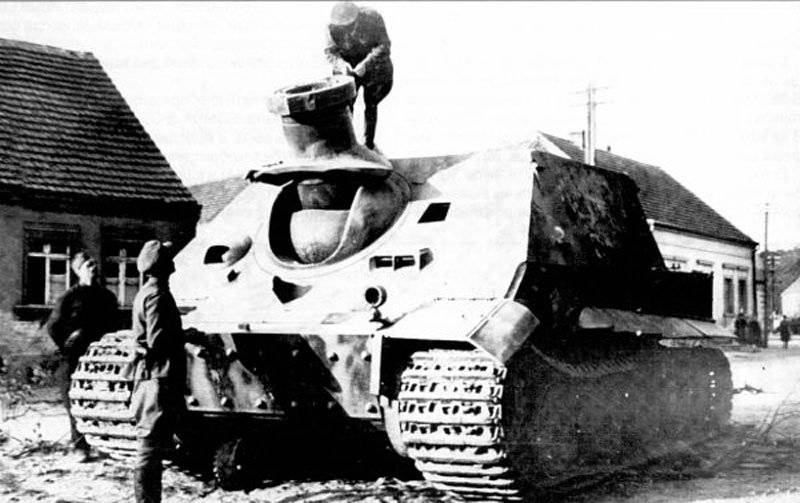
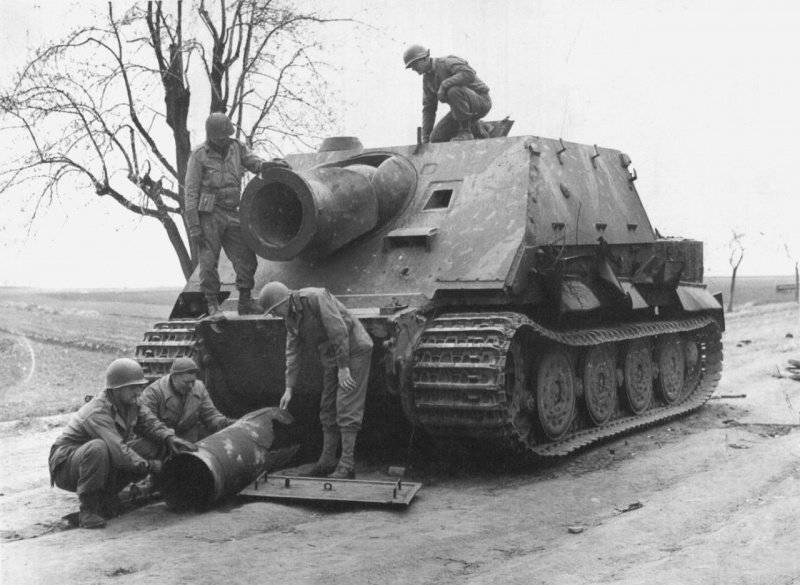
In the foreground is a ruined body of a 380-mm high-explosive rocket
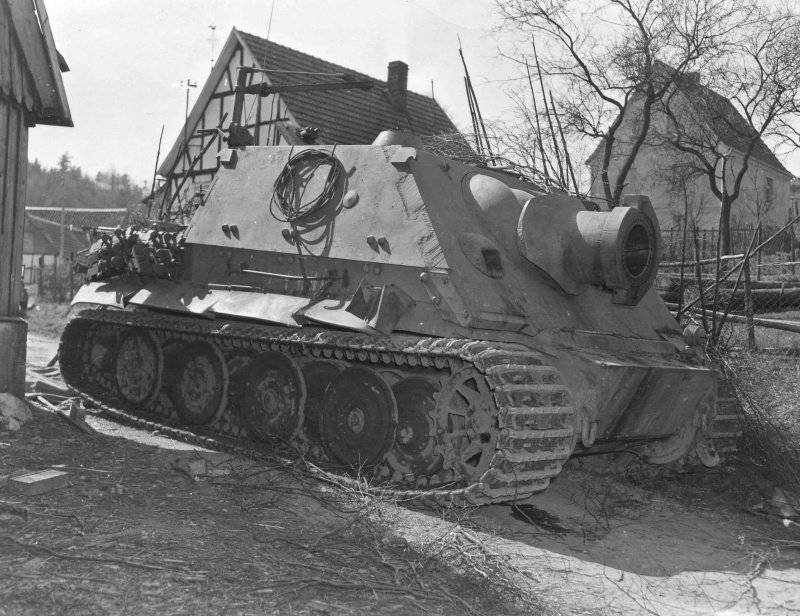
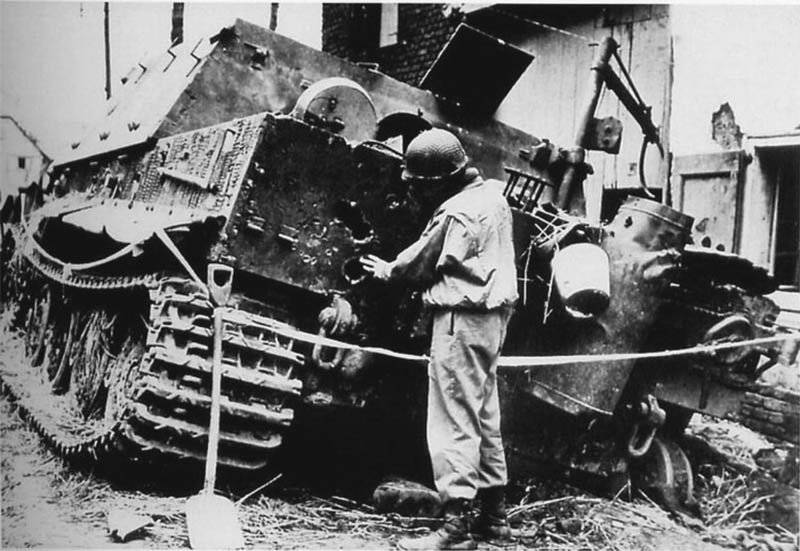
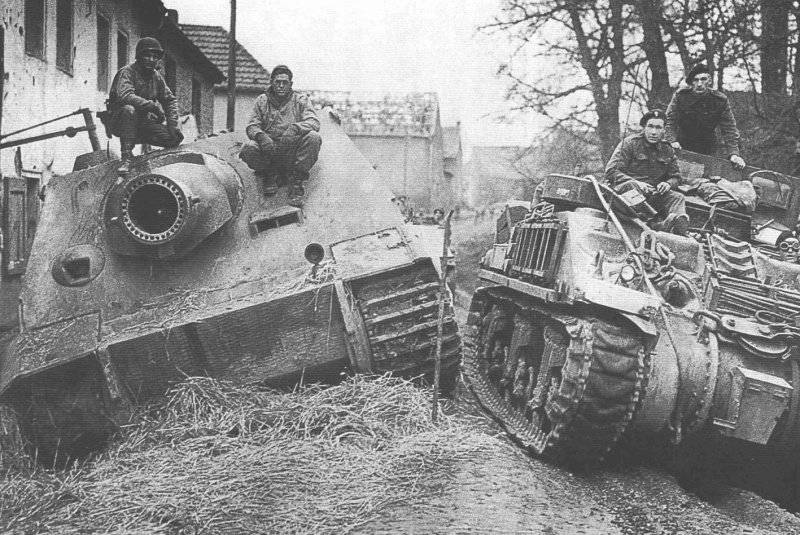
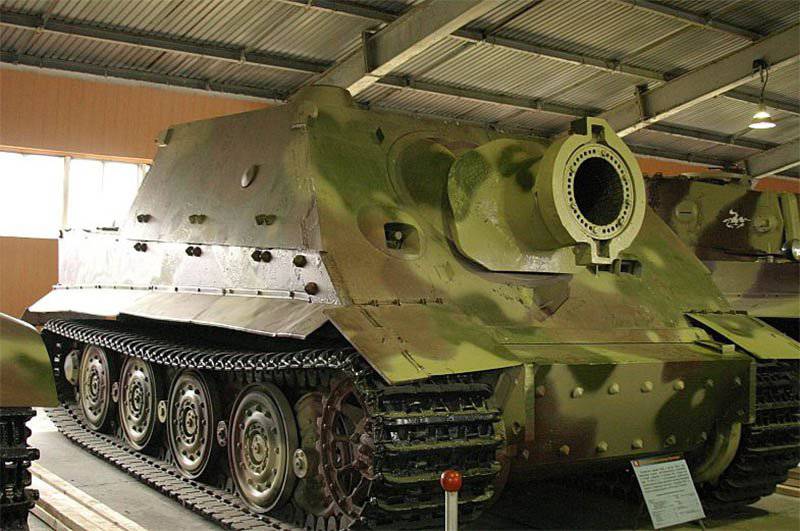
On the materials of the sites:
http://armor.kiev.ua/
http://pro-tank.ru/
http://achtungpanzer.com/
http://panzerworld.net/
Information